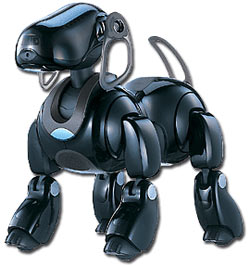Robots help treat autism
Children with autism live a lonely life. The robot itself may be more or less bringing them out of that isolation, researchers have discovered.
With artificial intelligence and simplified expressions of emotion, the machines succeed in failing parents and educators.
Anja lives in her own world. The girl does not play with other children, just likes to sit and play wooden toys alone. At times, you seem to completely forget the outside world. When parents ask the baby to turn his head. I was afraid to look at other people's eyes, and I was more afraid to touch others. Anja is one of thousands of autistic children. They recognize all the details of the world around but it is difficult to distinguish between what is essential and what is not important. Children do not properly interpret gestures and facial expressions, such as a smile. So these children often isolate themselves.
And now the robot can break this loneliness. The researchers of the Iromec project of EU are so convinced. They rely on experience from England. There, Kaspa robot doll has helped lonely children for many months.
Kerstin Dautenhahn from the University of Hertfordshire raised this idea when observing autistic children sitting in front of a computer."I suddenly realized that babies are more exposed to computers because it's simpler than humans." From there, the artificial intelligence expert intends to create a robot with human features, something between people and machines, to make these children not afraid of people anymore.
It is quickly realized that the appearance should not be too much like a human being, because it will scare these children. Hence Kaspa's appearance and appearance is like a puppet."All children realize immediately that it is a toy, not a human being," Dautenhahn said. However, this 50 cm tall doll still has basic communication skills between people and people: It can express facial features that are characteristic of joy. Pressing on a button, Kaspa smiles and opens his arms - a robot's smile.
Three hand ties

Aibo robot dog: healing tool.(Photo: Robotoys)
The facial expressions are greatly abstracted so that babies can easily understand. Robot dolls can also be drummed, clapped or waved, turned away or blinked. These are motions that motivate children to follow."You really like the robot and play with it more than you would with normal toys and they don't know what to do with them. For example, stuffed animals are always carried in line," Dautenhahn explained. .
But the most important thing is that the baby doesn't just play alone with Kaspa. Robot is controlled by one person. " That is, we have a three-way relationship: children - robots - caregivers ," the researcher said. As soon as the children discover that there is a person standing behind the robot, they also start to care about this person. And the kids overcame their shyness while playing more easily. Some even looked into the caregiver's eyes. Particular encouragement and suspense for Dautenhahn are situations when children bump into caregivers or play with them, such as rotating drums.
While the child is playing, it is possible to train social communication skills: to take care of robots, change roles and recognize gestures and facial expressions."Now it is not possible to tell how large Kaspa's healing benefits are. Our experience focuses on a few individual cases. But they encourage us very much," Dautenhahn concluded.
Iromec project
Now, based on her findings through Kaspa, she has worked with many Iromec scientists from six EU countries to draft a new robot that children with deformities or mental retardation can still play with it. A first model robot is being built.
Unlike Kaspa, Iromec robots do not have human appearance and will roll on wheels to be able to reach paralyzed children."It will be more likely to play around to attract children to participate," said Gernot Kronreif, project leader.
According to him, in the future robots should also be present in schools and in private homes to make changes. He said: "This toy gives you lots of fun and promotes communication more than a wooden toy or a stuffed animal."
- Robots can treat autism more effectively than doctors
- Discovering foods that can treat autism
- Scientists have finally found the cause of autism
- Hormone love helps treat autism
- Italian science opens up prospects for autism treatment
- Cure autism with robots that read patients' thoughts
- Building an autism research database
- Discover the cause of autism
- There is medicine for autism
- Successful study of drugs for autism in experimental mice
- The edible puzzle robot helps treat stomach pain
- The truth about the connection between genius and autism
 Green tea cleans teeth better than mouthwash?
Green tea cleans teeth better than mouthwash? Death kiss: This is why you should not let anyone kiss your baby's lips
Death kiss: This is why you should not let anyone kiss your baby's lips What is salmonellosis?
What is salmonellosis? Caution should be exercised when using aloe vera through eating and drinking
Caution should be exercised when using aloe vera through eating and drinking